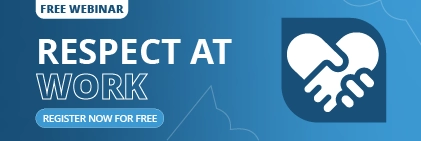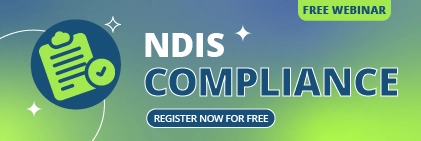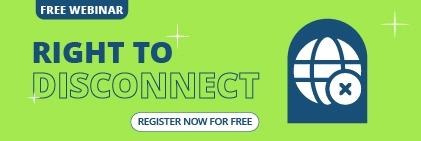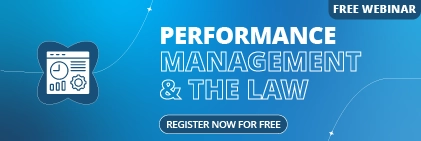Managing human resources can feel like juggling a dozen tasks at once: payroll, compliance, onboarding, performance reviews, and employee records. For small to mid-sized businesses, this administrative burden often falls on already stretched teams. That’s where the best core HR software becomes a game-changer.
The right HR management system doesn’t just organise employee data. It transforms how you hire, retain, and engage your workforce while saving countless hours on manual tasks. In this guide, we’ll explore the top core HR software solutions designed specifically for growing businesses, helping you make an informed decision that scales with your organisation.
What Is Core HR Software and Why Does Your Business Need It?
Core HR software, also known as Human Resource Management Systems (HRMS) or Human Resource Information Systems (HRIS), centralises all your people management functions into one unified platform.
Think of it as your digital HR department that handles:
- Employee records management: Store and access employee information securely
- Payroll processing: Automate salary calculations and tax filings
- Time and attendance tracking: Monitor work hours, overtime, and leave requests
- Benefits administration: Manage employee benefits, enrolment and updates
- Compliance management: Stay compliant with workplace regulations
- Performance management: Track goals, conduct reviews, and provide feedback
Small businesses can significantly reduce HR administrative time by implementing the right HRMS, enabling teams to stop drowning in spreadsheets and instead focus on building the business and supporting their people.
Key Features to Look for in Core HR Software
When evaluating HR solutions for your small to mid-sized business, prioritise these essential features:
- Employee Database and Self-Service Portal: A centralised employee database is the foundation of any HR system. Look for platforms that allow employees to update their own information, access pay slips, request time off, and view company documents without needing to contact HR staff constantly.
- Automated Payroll Integration: Automating payroll calculations, tax deductions, and compliance updates reduces human errors, ensuring accurate and timely payments. By eliminating manual data entry and duplication, integration saves time for HR and payroll teams, allowing them to focus on strategic tasks.
- Compliance and Reporting Tools: Regulations are constantly changing. Your HR software should help you stay compliant with employment laws, generate required reports, and maintain proper documentation for audits.
- Scalability and User-Friendly Interface: Small business owners wear multiple hats, so the less time it takes to onboard employees, field time-off requests, and manage benefits, the better. Choose software that’s intuitive from day one and can grow with your business.
Top 10 Core HR Software Solutions for Small to Mid-Sized Businesses
Let’s examine the best HR platforms available in Australia and New Zealand, each offering unique strengths for growing organisations.
1. Sentrient HR Management System
Best for: Australian and New Zealand businesses seeking AI-powered HR automation.
Sentrient offers an all-in-one HR platform specifically designed for businesses in Australia and New Zealand. The system features AI-powered assistance that provides intelligent recommendations and predictive analytics to optimise workforce management.
Key Features:
- Complete recruitment and onboarding automation
- Integrated payroll and rostering
- Performance and goal management
- HR compliance and safety modules
- Time and attendance tracking
- Community wall for employee engagement
Trusted by over 600 Australian businesses, Sentrient comes preloaded with courses, policies, forms, and documents tailored to local regulations, helping you get started quickly and efficiently.
2. BrightHR
Best for: UK, Australian, and Ne.w Zealand businesses needing comprehensive HR and health & safety.
BrightHR is a cloud-based HR software solution that streamlines and manages HR tasks efficiently, offering 24/7 HR and employment relations support, unlimited HR document storage, health and safety software, and performance management tools.
Key Features:
- Holiday planner with instant approval
- Roster planning with automatic notifications
- Unlimited cloud storage for documents
- BrightSafe health and safety compliance
- Mobile app for iOS and Android
- Employee wellbeing and counselling services
3. EnableHR
Best for: Australian businesses prioritising compliance and employee relations
EnableHR provides a comprehensive HR platform with a strong focus on Australian workplace compliance. The system includes case management tools, investigation tools, and document templates tailored to Australian employment law.
Key Features:
- Employee lifecycle management
- Workplace relations case management
- Policy and document management
- Performance review tools
- Compliance monitoring
- Employee self-service portal
4. ELMO Software
Best for: Mid-sized businesses needing a modular, enterprise-grade solution
ELMO is a leading cloud-based HR and payroll software platform in Australia and New Zealand. The modular design allows you to start with core features and add capabilities as your needs evolve.
Key Features:
- Comprehensive HRIS functionality
- Payroll and rostering integration
- Learning management system
- Performance management
- Remuneration planning
- Expense management
5. Sage HR
Best for: Businesses already using Sage accounting software.
Sage HR integrates seamlessly with Sage’s accounting products, creating a unified business management ecosystem. It offers solid core HR functionality with an emphasis on leave management and shift scheduling.
Key Features:
- Leave and absence management
- Shift scheduling and timesheets
- Performance appraisals
- Employee database
- Expense tracking
- Document management
6. HiBob
Best for: Modern, remote-first companies focused on employee experience.
HiBob specialises in remote team culture and engagement with features designed specifically for distributed workforces. The platform’s social media-like interface encourages connection through shoutouts and kudos.
Key Features:
- People analytics and insights
- Onboarding and offboarding workflows
- Compensation management
- Time off and attendance
- Performance management
- Surveys and engagement tools
HiBob’s Sandbox feature enables you to test HR functionalities before implementation, thereby reducing risk and ensuring a smooth adoption.
7. HappyHR
Best for: Startups and small businesses seeking simplicity.
HappyHR focuses on delivering essential HR functions without overwhelming complexity. It’s designed for teams that need to get up and running quickly with minimal training.
Key Features:
- Core employee records
- Leave management
- Performance reviews
- Document storage
- Employee self-service
- Mobile accessibility
8. Rippling
Best for: Tech-savvy companies wanting HR and IT management combined.
Rippling integrates HR, payroll, and IT management into a single platform, with over 500 program integrations and the ability to manage employee computers and software assignments.
Key Features:
- Automated onboarding and offboarding
- Global payroll capabilities
- Benefits administration
- Time and attendance tracking
- Device and app management
- Learning management system
9. BambooHR
Best for: Companies prioritising user experience and implementation simplicity.
BambooHR is a cloud-based HR software designed for small and medium-sized businesses, with over 34,000 companies using the platform. The system is renowned for being feature-rich yet simple to set up and use.
Key Features:
- Centralised employee records
- Applicant tracking system (ATS)
- Electronic signatures
- Performance management with 360-degree feedback
- Time-off tracking
- Customizable reports and analytics
BambooHR’s performance management system facilitates regular feedback and encourages continuous improvement through 360-degree feedback and self-assessments. Users consistently praise the platform for saving hundreds of hours on manual processes.
10. Employment Hero
Best for: Australian and New Zealand businesses seeking an all-in-one solution.
Employment Hero combines HR, payroll, and benefits into a comprehensive platform tailored for the Australian and New Zealand markets. The system emphasises compliance with local employment laws and regulations.
Key Features:
- Single Touch Payroll (STP) compliance
- Award interpretation engine
- Employee onboarding workflows
- Performance management
- Employee benefits marketplace
- Training and development tools
The platform’s award interpretation engine is particularly valuable for Australian businesses navigating the complexities of modern awards and enterprise agreements.
Which Core HR Software Would You Recommend for Small to Mid-Sized Businesses?
The answer depends on your specific circumstances, but here’s a quick decision framework:
- Choose Sentrient or EnableHR if you’re an Australian business that needs robust local compliance features and prefers AI-powered automation.
- Choose BrightHR if you operate in the UK, Australia, or New Zealand and need a comprehensive solution for bundled health & safety compliance alongside HR functions.
- Choose BambooHR if user experience is your top priority, and you want a platform that’s immediately intuitive for your entire team.
- Choose Rippling if you’re a tech company that also needs IT management, device provisioning, and extensive third-party integrations.
- Choose HiBob if you manage remote or distributed teams and want to prioritise employee engagement and company culture.
For most small to mid-sized businesses, BambooHR and HR Cloud offer the best combination of functionality and ease of use for organisations with under 50 employees. As you scale beyond 50 employees, consider platforms with more advanced analytics and customisation options.
How to Successfully Implement Core HR Software
Choosing the right platform is only half the battle. Follow these steps to ensure successful implementation:
- Secure Leadership Buy-In Early: Obtain executive support before you start. HR software affects every employee, so having champions at the leadership level ensures adequate budget and organisational commitment.
- Clean Your Data First: Migrating messy data creates messy systems. Spend time auditing and cleaning your employee records, correcting inconsistencies, and standardising formats before migration.
- Involve Employees in the Process: Employee adoption is crucial for HRMS success and can be enhanced by clearly communicating benefits, such as easier time-off requests or access to pay slips. Identify and train employee champions who can support their colleagues during the transition.
- Plan for Adequate Training: Don’t underestimate the learning curve. Schedule multiple training sessions, create reference materials, and make support resources easily accessible.
- Phase Your Rollout: Begin with core modules, such as employee records and time-off management. Once those are stable, gradually add more complex features, such as performance management and advanced reporting.
Implementation timelines vary from two weeks for simple systems to six months for complex platforms, with most small businesses expecting four to eight weeks for typical implementation.
Common Pitfalls to Avoid When Choosing HR Software
- Focusing Solely on Price: The cheapest option often proves more expensive in the long run due to hidden fees, poor support, or limited functionality that necessitates maintaining multiple systems.
- Ignoring Integration Capabilities: Your HR software should integrate with your existing tools, including accounting software, communication platforms, and productivity apps. Poor integration creates data silos, doubling your workload.
- Overlooking Mobile Accessibility: Your employees and managers need to be able to access HR functions from anywhere. Mobile apps aren’t just nice-to-have features; they’re essential for modern workforces.
- Not Planning for Growth: That simple system, perfect for 10 employees, might not be sufficient for 50. Select software that scales with your business without necessitating a complete platform overhaul in two years.
- Skipping the Demo and Trial Period: Never buy HR software without testing it first. Take advantage of free trials and demos to ensure the platform matches your team’s workflow and technical capabilities.
The ROI of Core HR Software
Investing in HR software delivers measurable returns across multiple dimensions:
- Time Savings: BambooHR users report saving hundreds of hours annually and reducing HR costs by 40%. One user saved 20 hours per week and $20,000 annually just from payroll automation.
- Error Reduction: Automated calculations eliminate costly payroll mistakes and compliance penalties that can run into thousands of dollars per incident.
- Employee Satisfaction: Self-service portals empower employees, reducing frustration and freeing HR staff to focus on strategic initiatives that improve retention.
- Compliance Protection: Proper documentation and automated compliance tracking protect against lawsuits and regulatory fines that could cripple a small business.
- Data-Driven Decisions: Advanced reporting transforms your people data into actionable insights about turnover trends, hiring costs, and performance patterns.
Future Trends in HR Software for Small to Medium Businesses
The HR technology landscape continues to evolve rapidly. Keep these emerging trends on your radar:
- AI and Machine Learning: Artificial intelligence is moving beyond chatbots. Modern HR systems use AI for predictive analytics, identifying flight risks, recommending training programs, and even suggesting optimal salary offers.
- Enhanced Employee Experience: HR software increasingly resembles consumer apps, with intuitive interfaces, mobile-first design, and personalised experiences that employees actually want to use.
- Integration with Communication Tools: Seamless integration with platforms like Slack, Microsoft Teams, and Zoom enables HR functions to be integrated into employees’ daily workflows, rather than requiring them to visit separate portals.
- Focus on Wellbeing and Mental Health: Forward-thinking platforms now include employee wellbeing features, mental health resources, and engagement tools that go beyond traditional HR functions.
Conclusion
Choosing the best core HR software for your small to mid-sized business isn’t just about managing employee records more efficiently; it’s also about streamlining key processes. It’s about creating a foundation for sustainable growth, improving employee experiences, and freeing your team to focus on strategic initiatives rather than administrative drudgery.
The platforms we’ve explored, from Sentrient’s AI-powered automation to BambooHR’s user-friendly interface, each offer unique strengths for different business needs. The key is identifying which features matter most for your organisation and finding the solution that aligns with your growth trajectory.
Ready to transform your HR operations? Start by:
- Assessing your current HR pain points and priorities
- Scheduling demos with 3-4 platforms that match your needs
- Involving key stakeholders (including employees) in the evaluation
- Testing the platforms during free trial periods
- Planning your implementation timeline and training approach
The right HR software isn’t an expense – it’s an investment in your business’s most valuable asset: your people. Take the first step today toward more efficient, effective, and strategic human resource management.
Frequently Asked Questions
1. What’s the difference between HRIS, HRMS, and HCM?
HRIS (Human Resource Information System) focuses on data management and reporting, while HRMS (Human Resource Management System) handles core HR functions, such as payroll and benefits. HCM (Human Capital Management) encompasses strategic workforce planning and talent development. In practice, vendors often use these terms interchangeably.
2. How long does it take to implement HR software?
Most small businesses can expect a typical implementation timeframe of four to eight weeks. However, this can vary significantly, ranging from two weeks for simple systems to six months for complex platforms.
3. Can small businesses afford quality HR software?
Absolutely. Most small businesses should budget $5 – $15 per employee per month for a quality HRMS that covers core needs. When you factor in time savings and error reduction, the ROI is typically positive within the first year.
4. Do I need IT expertise to implement HR software?
Modern cloud-based HR systems are designed for non-technical users. Most small businesses can manage implementation and ongoing maintenance with their existing staff, although you may need IT assistance for some advanced integrations.
5. What happens to my data if I switch to a different provider?
Reputable HR software providers allow you to export your data in standard formats. Before committing to any platform, verify its data portability policies and export capabilities to ensure seamless data transfer.
6. Should I choose an all-in-one platform or best-of-breed tools?
For small to mid-sized businesses, all-in-one platforms typically offer better value and simpler management. As you grow beyond 200 employees, best-of-breed solutions may provide more specialised capabilities worth the added complexity.
7. How do I get employees to use the new system?
Success depends on clear communication, comprehensive training, and demonstrating immediate benefits. Highlight time-savers, such as mobile access to pay slips, simplified time-off requests, and reduced paperwork. Identify and empower employee champions who can support their colleagues.
Read More About HR Management:
- The Top 10 HR Policy And Procedure Management Software To Streamline Your HR Operations
- Top HR Software for Australian Payroll & Leave Regulations in 2025
- Best HR Software for Small Businesses in Australia
- The Top 10 Applicant Tracking Systems (ATS) to Streamline Your Hiring Process
- How to Choose the Best HR Software for Your Industry: Retail, Construction, and Hospitality





